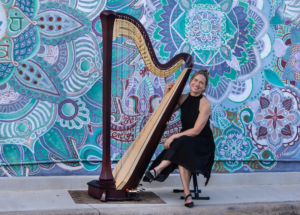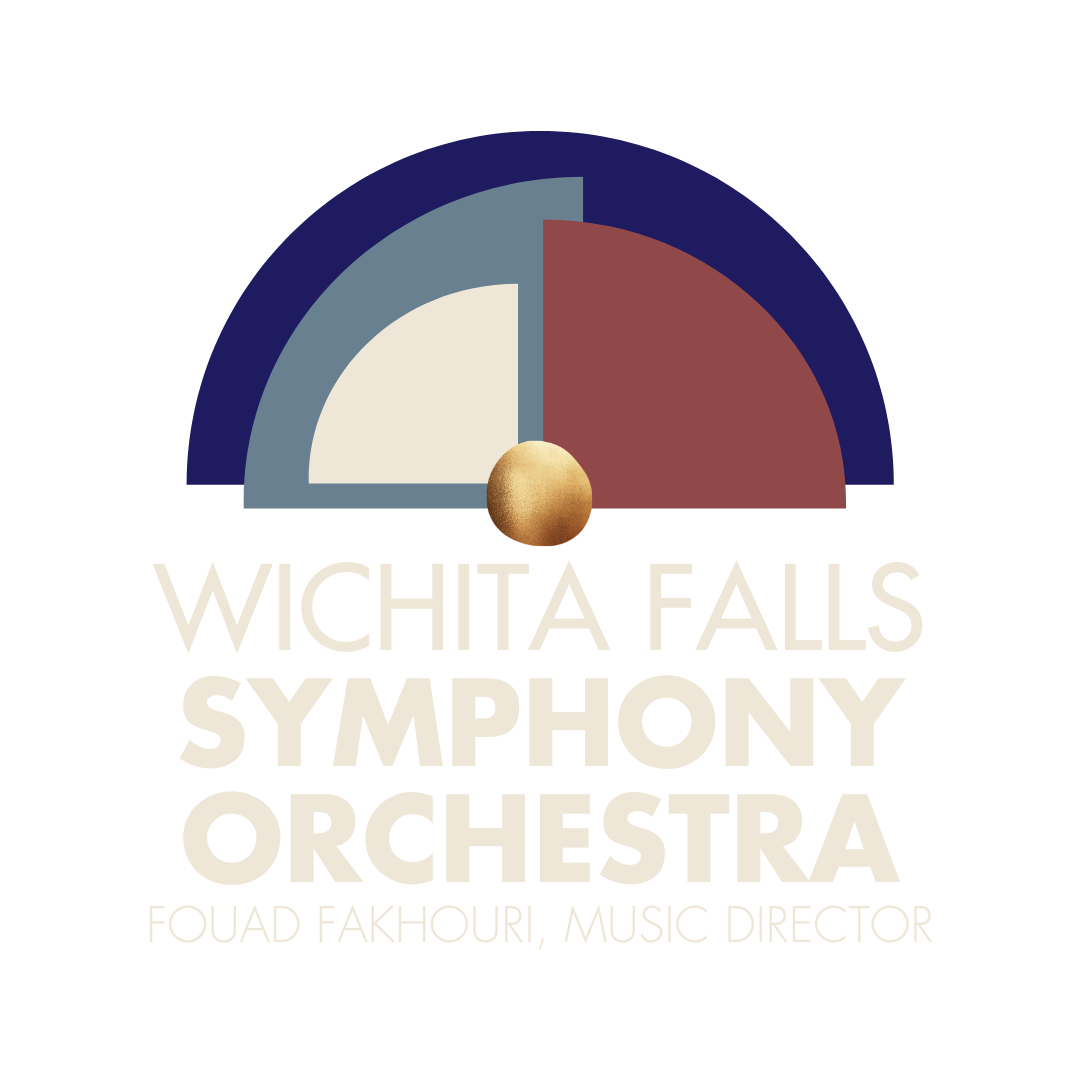Program Notes – October 19, 2024
Written by Todd Giles
Gabriela Ortiz: Kauyumari (2021)
Gabriela Ortiz (b. 1964) was raised by folk musician parents in Mexico City who worked to perform and record the traditional music of Mexico and Latin America; her other musical influences include African, Afro-Cubano, and rock. Like Astor Piazzolla and Maurice Ravel before her, Ortiz studied for a time in Paris. Kauyumari, which was commissioned by the LA Philharmonic in 2021, is a brief, single-movement work whose title translates as “blue deer,” which in Huichol folklore refers to a spirit guide who assists peyote takers through their vision quests. According to the composer, “Each year, these Native Mexicans embark on a symbolic journey to ‘hunt’ the blue deer, making offerings in gratitude for having been granted access to the invisible world, through which they also are able to heal the wounds of the soul.” With a timpani and brass opening reminiscent of Aaron Copland’s Fanfare for the Common Man, Kauyumari, like Ravel’s Boléro, presents rich textures, rhythmic complexity, and a gradual evolution in dynamics and intensity.
Maurice Ravel: Alborada del gracioso (1905)
A French Post-Impressionist composer of orchestral, chamber, ballet, opera, and vocal music, Maurice Ravel (1875–1937) was born in the Basque region of Southern France near the Spanish border, a locale which figures heavily in the two works on tonight’s program. Alborada del gracioso features lively and intricate rhythms characteristic of Spanish dance, while Boléro, also based on Spanish dance rhythms, features a repetitive structure typical of Spanish music. The former was originally the fourth in a five-movement suite composed for piano in 1905 titled Miroirs (Mirrors). This aubade, or morning serenade, can be translated as “Morning Song of the Jester.” Ravel orchestrated the rhythmically-intense work in 1918. Castanets, pizzicato violins, and harps add to the Spanish flavor, the latter two calling to mind the sounds of strummed guitars. The jester’s song is heard in the solo bassoon’s sincere but somewhat lumbering serenade. Like Ortiz’s Kauyumari, Ravel’s work also explores cultural identity through the inclusion of folk elements.
Astor Piazzolla: Adiós Nonino (1959)
Astor Piazzolla (1921–1992), who was born to Italian immigrants in Argentina, moved with his family to Greenwich Village in 1925 when he was just four years old. Eight years later, his father bought him something that would determine the trajectory of the rest of his life—a used bandoneon, a concertina-like instrument popular in traditional Argentine music. The Piazzollas moved back to Argentina in 1936, where Astor began to play in a number of tango orchestras. In 1941 he began music lessons with classical Argentinian composer Alberto Ginastera, who recommended he study in France, where he worked with the legendary teacher Nadia Boulanger, who taught many of leading composers of the 20th century, including Americans Virgil Thompson, Aaron Copland, and Philip Glass. Piazzolla’s most lasting gift to music was his nuevo tango, which brought to traditional tango his interests in jazz and the contemporary classical music of Stravinsky, Bartók, and Ravel. Composed in thirty minutes upon learning of his father’s untimely death in 1959 in a bicycle accident, Adiós Nonino set the standard for his compositional style to come, with its fast-slow-fast-slow-coda format. Nonino, Piazzolla’s father’s nickname, is an Argentinian variation on the Italian “Nonno” or grandfather. Adiós Nonino is a reworking of a tango written five years earlier in Paris in honor of his father. The composition, which has been transcribed for a variety of instruments and types of ensembles, merges traditional tango rhythms with avant-garde elements, creating a dialogue between sorrow and hope. Twenty years after composing the work, Piazzolla said, “Perhaps I was surrounded by angels. I was able to write the finest tune I have written. I don’t know if I shall ever do better. I doubt it.”
Alberto Ginastera: Four Dances from Estancia, Op. 8a (1943)
Argentinian composer Alberto Ginastera (1916–1983) met and became close friends with Aaron Copland in 1941, who was touring South America with Lincoln Kirstein’s American Ballet Caravan, which had commissioned him to write the music for Billy the Kid. Upon hearing Ginastera’s first ballet while in Argentina, Kirstein likewise commissioned him to write a ballet score about Argentine country life. Ginastera was so taken with Copland’s ballet of the American West, he decided to write his own score about Argentinian cowboys of the Pampas grasslands known as gauchos. Unfortunately for Ginastera, the ballet company disbanded in 1942, so the ballet did not actually premiere until 1952. In the meantime, Ginastera culled four dances from the score to form his Estancia suite, which had its premiere in 1943.
The first three movements of Four Dances from Estancia come from the second scene of the ballet titled “La mañana” (Morning). “Los trabajadores agrícolas” depicts a day in the life of agricultural workers. Its fast, pulsing rhythm is inspired by the Argentine folkdance known as the malambo, in which two gauchos take turns competing against one another with energetic stomping and elaborate leg movements. “Danza del trigo” (Wheat Dance) provides a gentle, lyrical interlude following the raucous brass and timpani of the previous movement. The dance begins with a solo flute playing the opening melody, followed by soaring, rhapsodic violins, before the opening melody returns to bring the movement to a close. “Los peones de hacienda” (The Cattlemen) brings us back to the first movement with its aggressive brass and timpani propelling us through the energetic dance. The heated contest between the gauchos gains momentum in “Danza final,” the music getting louder and more complex before coming to a climactic finale.
Alberto Ginastera: Harp Concerto, Op. 25 (1956)
Along with admiring Copland, who he studied under at Tanglewood in Massachusetts from 1945 to 1947, Ginastera also found inspiration in contemporary European composers Stravinsky, Bartok, de Falla, and Ravel, all of whom wrote concertos, and, more importantly, incorporated folk music into their works. Both Ravel and Ginastera were slow, meticulous composers, neither producing a large output. Ginastera composed only fifty-four numbered works throughout his lifetime, placing the harp concerto at the tail-end of what he called his “Subjective Nationalism” phase (1948–1958), a period in which he continued to explore Argentine musical traditions, but experimenting more with modern sounds and abstracted forms. Also, like Ravel, most of Ginastera’s compositions—including Estancia and the Harp Concerto—are still active in the repertoire. Indeed, the Harp Concerto is one of the most performed works for the instrument.
Along with being scored for the standard orchestral fare, the Harp Concerto includes the tambourine, field drum, cymbals, celesta, xylophone, and various Latin percussion instruments. Similar to Estancia, the first movement of the Harp Concerto bursts on stage with strong percussive rhythms influenced by the malambo. The harp stays in the foreground in the slow, mesmerizing second movement, where the dissonance continues in the strings, painting a dreary mental landscape punctuated by passages from the harp and brief visits from the woodwinds and a forlorn horn. A long cadenza opens the third and final movement, “Liberamente capriccioso—Vivace,” which includes some interesting techniques on the harp, including strumming open notes like a guitar and flowing glissandi played with the fingernails. The orchestra bounds vibrantly back into the conversation with only four minutes left, as the dissonant and dramatic malambo brings the work to a close.
Maurice Ravel: Boléro (1928)
Before Maurice Ravel left for a four-month tour of America and Canada in the winter of 1928, he promised Ida Rubenstein he would compose a work for her ballet troupe upon his return to France. One of the most recognizable orchestral works in the classical repertoire, Boléro’s hypnotic rhythm and persistent, gradually-building theme made Ravel an overnight success. Beginning softly with a snare drum solo, the single-movement Boléro evolves through various sections of the orchestra, each adding depth and complexity to the theme. The repetitive structure, coupled with its crescendo, creates a mesmerizing effect, drawing listeners into its relentless march towards a climactic finale. According to the composer, Boléro “is an experiment in a very special and limited direction . . . consisting wholly of orchestral tissue without music—of one very long, gradual crescendo . . . no contrasts and practically no invention except in the plan and the manner of the execution.” As he said elsewhere, he first and foremost strove for “technical perfection” as a composer. Interestingly, though, he also said that music “should always be first emotional and only after that intellectual.” Perhaps that is why for many, with its intense buildup and eruptive energy, Boléro has always been an anthem of sexuality. In the original ballet, for example, Rubenstein, adorned as a Gypsy woman in a Spanish tavern, danced suggestively on a tabletop with men encircling her in a frenzy. And, of course, for those alive in the late 1970s, Boléro will forever be associated with Blake Edward’s adult comedy starring Dudley Moore and Bo Derek, 10.




